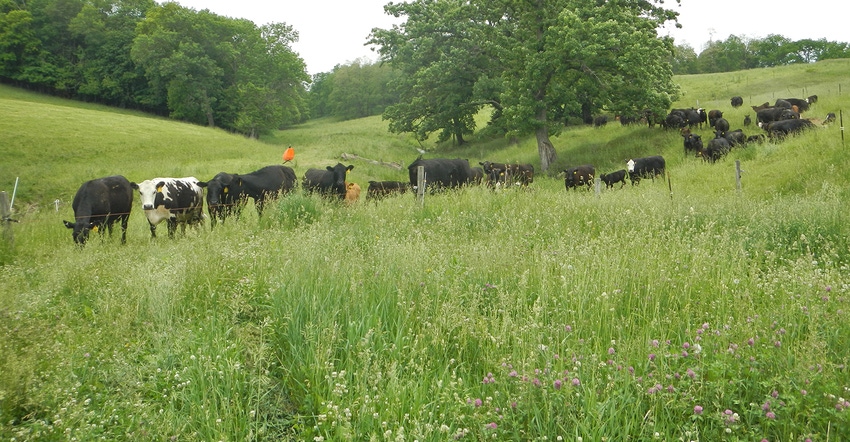November 27, 2017

By Ryan Sterry
Executing a successful reproductive management program for the beef herd often comes down to the details. Many things need to go right, and many things can go wrong, in terms of a beef cow becoming pregnant. Artificial insemination is not right for every beef producer, but it is becoming a more attractive and cost-effective option for many farms.
Synchronization of estrus and timed AI are management tools that have made AI in the beef herd more efficient. Inseminating multiple cows at the same time does bring up a practical question: How many straws of semen can be thawed at one time? Several university studies have tested this question, with mixed results. Recommendations ultimately depend on the technician’s ability and the cattle-handling facility.
The common answer is however many cows the technician can inseminate within 10 to 15 minutes, and no more than that. Can the temperature of the semen be protected and kept sanitary from the time the AI gun is loaded until the semen is placed in the cow? If the answer is no, either conditions must change or fewer units of semen should be handled at one time.
When thawing multiple units at the same time, agitate the water to make sure straws are not touching each other. This ensures even thawing. Depending on conditions, 10 to 20 units can be thawed at one time. The key factor is to maintain proper water bath temperature, with most manufacturers recommending 95 degrees F. Multiple water baths may be justified in conditions where water bath temperature cannot be maintained while thawing large batches of semen.
When using sexed semen, the margin for error is even smaller, with recommendations of thawing no more straws than can be used in five to eight minutes.
Another difference to consider with sexed semen is timing of AI. Following heat detection, the standard rule has been to inseminate around 12 hours after the onset of estrus. According to Joe Dalton, University of Idaho, breeding later than 12 hours may be better with sexed semen. While different sexed semen products exist, in general, they are much more highly processed, may have lower total sperm counts, and are in ¼ cc vs ½ cc straws. These factors all contribute to sexed semen needing greater care.
If your farm is using a synchronization program and you are disappointed with the results, consider working with your veterinarian to identify the percentage of cows that are still postpartum anestrus at first breeding. These are cows that have not returned to cycling since calving, and will have lower fertility than cows that are cycling. A herd using synchronization, with a high proportion anestrus, can have quite poor conception rates to first AI.
Before giving up on synchronization, remember that when breeding is based on heat detection or natural service, anestrus cows would not get bred at all. Synchronization products using progesterone can help anestrus cows begin cycling. If your herd has a high proportion anestrus, begin to investigate if there is a nutritional cause, body condition scores are lower than desired, and at how many days post-calving first AI is occurring.
Sterry is the Extension ag agent in St. Croix County, Wis. This column is provided by the University of Wisconsin Extension’s Wisconsin Beef Information Center. Learn more at fyi.uwex.edu/wbic.
You May Also Like




